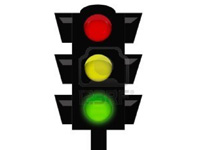
The Safe Sound Indicator flashes green, amber – then red to let pupils and teachers know when the din reaches intolerable levels. It has already proved a success at significantly cutting noise in child centres across New Zealand.
Now primary schools are following suit to reduce the risk of hearing loss for children and their teachers and create an improved learning environment. When the $292.50 devices were tried out in kindergartens, audio experts recorded some noise levels equivalent to a jet plane taking off.
The Safe Sound Indicator was developed over several years by the National Foundation for the Deaf from a concept by a 10-year-old New Plymouth girl, Jamie Fenton.
Chief executive of the Foundation for the Deaf, Louise Carroll, said the sound indicators were particularly effective in open-plan classrooms where noise could quickly reach uncomfortable levels. She said 1200 were now in use at childcare centres. They were also a valuable tool for reducing hearing damage.
A new report from the University of Auckland’s Our Voices Project asks young people what…
The government has opened a tender for new standardised assessment tests, leaving educators shocked and…
Early in her career, Kiri Turketo found inspiration in an unlikely source. In this Principal…
Real stories of dedication, challenges, and triumphs from educators in NZ. Part six comes from…
Is fast furniture impacting your school's environmental footprint? We explore eco-friendly solutions to reduce furniture…
A new report from the New Zealand Initiative argues we need a stronger and clearer…
This website uses cookies.